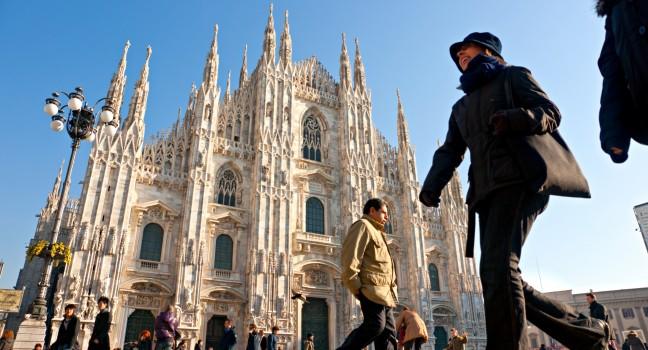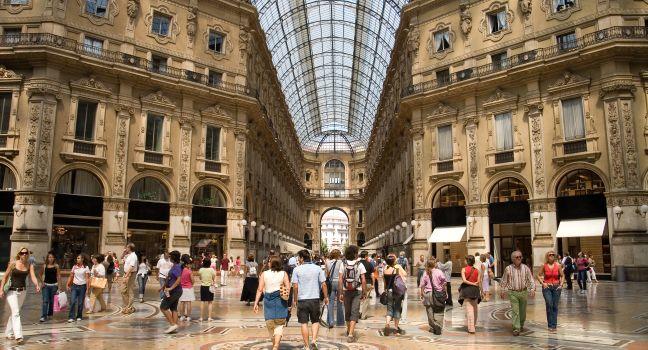In 1296, Arnolfo di Cambio (circa 1245–1310) was commissioned to build "the loftiest, most sumptuous edifice human invention could devise" in the Romanesque style on the site of the old church of Santa Reparata. The immense Duomo was consecrated in 1436, but work continued over the centuries. The imposing facade dates only from the 19th century; its neo-Gothic style somewhat complements Giotto's genuine Gothic 14th-century campanile. The real glory of the Duomo, however, is Filippo Brunelleschi's dome, presiding over the cathedral with a dignity and grace that few domes to this day can match.
Brunelleschi's cupola was an ingenious engineering feat. The space to be enclosed by the dome was so large and so high above the ground that traditional methods of dome construction—wooden centering and scaffolding—were of no use whatsoever. So Brunelleschi developed entirely new building methods, including a novel scaffolding system, that he implemented with equipment of his own design. Beginning work in 1420, he built not one dome but two, one inside the other, and connected them with ribbing that stretched across the intervening empty space, thereby considerably lessening the crushing weight of the structure. He also employed a new method of bricklaying, based on an ancient herringbone pattern, interlocking each course of bricks with the course below in a way that made the growing structure self-supporting.
The result was one of the great engineering breakthroughs of all time: most of Europe's later domes, including that of St. Peter's in Rome, were built employing Brunelleschi's methods, and today the Duomo has come to symbolize Florence in the same way that the Eiffel Tower symbolizes Paris. The Florentines are justly proud of it, and to this day the Florentine phrase for "homesick" is nostalgia del cupolone (homesick for the dome).
The interior is a fine example of Florentine Gothic. Although of the cathedral's best-known art has been moved to the nearby Museo dell'Opera del Duomo, notable among the works that remain are two massive equestrian frescoes, both on the left nave, that honor famous soldiers: Niccolò da Tolentino, painted in 1456 by Andrea del Castagno (circa 1419–57), and Sir John Hawkwood, painted 20 years earlier by Paolo Uccello (1397–1475).
A 1995 restoration repaired the dome and cleaned the vastly crowded fresco of the Last Judgment, executed by Giorgio Vasari (1511–74) and Zuccaro, on its interior. Originally Brunelleschi wanted mosaics to cover the interior of the great ribbed cupola, but by the time the Florentines got around to commissioning the decoration, 150 years later, tastes had changed. The climb to the top of the dome (463 steps) is not for the faint of heart, but the view is superb. Admission to the Duomo is free; there is, however, an entrance fee for the cupola (included in some combo tickets), and timed-entry reservations to visit it are required.





